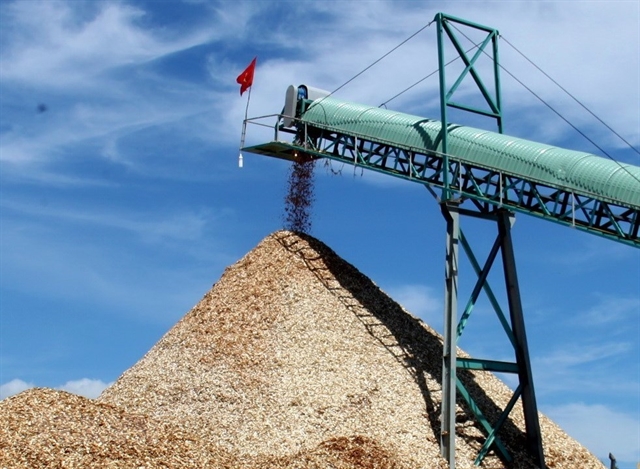 Economy
Economy


|
| Wood pellets produced at a plant in central Phú Yên Province. The exports of pellets has grown rapidly in recent years. — VNA/VNS Photo |
HÀ NỘI — The wood pellet industry should focus on developing raw material plantation areas to tap the potential from the increasing global demand for exports, experts have said.
In the global market, the demand for wood pellets was increasing as the Russia – Ukraine conflict pushed up the demand of EU countries in addition to the trend of switching to clean fuels along with commitments about emissions reductions at COP26.
Việt Nam’s wood pellet exports saw rapid increases in recent years and were expected to become one of the agro-forestry products which touched a revenue of $1 billion or higher.
Statistics showed that wood pellet exports reached US$354 million in the first six months of this year, equivalent to 85 per cent of the revenue in 2021 and were forecast to reach $700 million for the full year.
Average export prices also increased rapidly to nearly $150 per tonne, up by 27 per cent over the 2021 average.
Nguyễn Ba Duy, deputy director of Smart Wood Việt Nam which exported wood pellets to the Republic of Korea and was looking to penetrate Japan, said there was still significant room for expanding exports in these two markets.
The EU also had a lot of potential, Duy said, adding that meeting the quality requirements of the EU remained a problem for a majority of domestic pellet producers.
Tô Xuân Phúc from Forest Trends, said the demand and prices of pellets in the EU were increasing rapidly, which was grabbing large attention from the US – the biggest pellet exporter in the world.
Although Việt Nam was not a big supplier of pellets to the EU, the rising demand and price in the EU brought a significant opportunity for Vietnamese producers to expand exports to this market, Phúc said.
Currently, Việt Nam mainly exported pellets to Japan and the Republic of Korea, while exports to other markets were very modest. Especially, the exports to Japan posted rapid growth of an average 90 per cent in the 2019-21 period and are expected to continue to increase this year.
Phúc said that the source of input wood for pellet production played the most important role in the development of the industry, adding that the current source was mainly by-products from wood processing.
Phúc said that pellet producers and exporters should pay attention to developing raw material plantation areas to stabilise the source of input materials.
Enterprises could cooperate with households who had access to the land for afforestation, he said.
Besides, the trend of pellet consumption in major markets demonstrated that in the future, pellets would be required to be made from sustainably certified materials, he said, stressing that developing raw material areas was necessary.
According to Duy, as pellet prices increased, many enterprises rushed to invest in pellet production. This posed a risk to the sustainable development of the industry because the source of raw materials for pellet production remained limited, Duy said.
Another concern to pellet producers was that the Government was considering increasing the export tax on pellets which was currently zero because pellets were not deeply processed, thus, competing directly with the large-timber plantation development.
Duy said that increasing the export tax on pellets was unreasonable because pellet production mainly used by-products of the wood processing industry.
Đỗ Xuân Lập, President of the Việt Nam Timber and Forest Product Association, said the government should not impose an export tax on pellets to maintain competitiveness in the global market.
Development strategies should also be raised for the pellet production industry to grow sustainably, Lập said.
There were more than 300 pellet production facilities in Việt Nam, around 80 per cent of which were in the southern and central coast regions. — VNS




